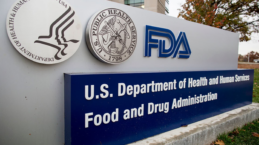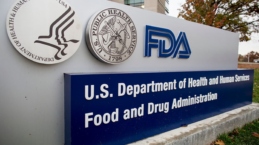

insights
Halloran’s View on FDA’s Draft Guidance on Psychedelic Drugs
The U.S. Food and Drug Administration (FDA) recently issued a draft guidance for industry on “Psychedelic Drugs: Considerations for Clinical Investigations.” As FDA notes, this guidance is intended to support ethical conduct of trials, uphold trial integrity, and ensure reliability of trial results.
This guidance raises the following questions for Halloran:
- Why is this guidance needed?
- What does this guidance have in common with other drug development-related guidances?
- What elements of this guidance are unique to psychedelics?
- What does Halloran think FDA should reconsider before finalizing this guidance?
Why is This Guidance Needed?
Interest in psychedelic drugs for unmet medical need has increased substantially in recent years. FDA understands sponsors in this space face unique challenges and have thus outlined their recommendations to address these challenges. Challenges include the impact of the psychedelic experience (e.g., mood or cognitive changes and hallucinations), the rapid onset and long-lasting effects of psychedelics, and the therapy component integral to many psychedelic drug trials.
What Does this Guidance Have in Common with Other Drug Development-Related Guidances?
Much of this guidance is aligned with existing guidances issued for clinical investigations of therapeutics. For instance:
- Chemistry, manufacturing, and controls (CMC) and/or nonclinical – Sponsors may be able to submit existing data (their own or data from others with right to reference) to support safety and toxicity in Investigational New Drug (IND) submission.
- Nonclinical – Sponsors should follow existing International Council for Harmonisation (ICH) guidance on nonclinical studies for human clinical trials and marketing applications.
- Clinical pharmacology – Sponsors should characterize the pharmacokinetics and/or pharmacodynamics of the drug.
What Elements of This Guidance are Unique to Psychedelics?
Evaluation of the Psychedelic Drug as a 5-HT2B Receptor Agonist
Consensus opinion in the psychedelic research community is that these drugs exert their effect at the 5-HT2A (serotonin) receptor; however, these drugs also commonly bind to the 5-HT2B receptor – a receptor linked to heart valvulopathy in humans. Sponsors should thus conduct studies to determine whether the psychedelic drug under development is a 5-HT2B receptor agonist. If the drug is a 5-HT2B receptor agonist, the sponsor should conduct a microscopic evaluation of heart tissue in animal models in repeat-dose toxicology studies. The outcome of this evaluation should be considered when defining clinical study inclusion and exclusion criteria to protect potential participants at risk of heart valve disease.
Requirement for an Abuse Potential Assessment
An assessment of the abuse potential of a drug product under development is typically conducted as a component of its safety evaluation. Products that are assessed for abuse potential include new molecular entities active in the central nervous system, and those containing drugs scheduled under the Controlled Substances Act.
Additional considerations:
- The requirement for an abuse potential assessment is not unique to psychedelics, but as these drugs are both active in the central nervous system and are Schedule I drugs, the abuse potential assessment is vital to successful development and marketing.
- An abuse potential assessment is intended to consider both patients and non-patients; it appears FDA has learned lessons from the opioid crisis.
- FDA reminds sponsors of the requirement for compliance with US Drug Enforcement agency (DEA) regulations, including registration for the use, handling, storage, and transport of a Schedule I drug. This requirement is intended to minimize the risk of drug diversion and abuse.
- Sponsors may be able to submit published literature on known abuse potential to support their assessment instead of conducting a full assessment themselves.
- The abuse potential assessment requirement may have a long-term silver lining. As the number of FDA-approved studies on any given psychedelic drug increases, the number of publications detailing the abuse potential in a medical setting will also increase. This will facilitate abuse potential assessment submissions for future programs, support drug rescheduling for marketing applications, and may eventually support rescheduling of psychedelic drugs by the DEA.
Study Drug Control
- FDA expects sponsors to conduct adequate and well-controlled (AWC) studies. This includes a quantitative comparison of the efficacy of the drug under investigation against a control treatment. The fast-acting and pronounced effects of psychedelic drugs make identification of an appropriate control particularly challenging. FDA is not prescriptive on appropriate controls but does provide suggestions (e.g., subperceptual drug doses or use of other psychedelic drugs as controls).
Trial Monitors
- The FDA does not have regulatory authority over psychotherapy; however, many trials with psychedelic drugs include therapy as an integral component of treatment. This therapeutic component raises concerns over patient vulnerability, patient expectancy, and monitor bias.
- FDA recommends the clinical study team include video or central raters blind to treatment allocation (i.e., raters and trial monitors should remain separate). This recommendation is intended to minimize potential bias on the part of both patients and monitors; however, adherence to this requirement would increase the number of personnel needed to complete the trial.
- The FDA also recommends observation by two monitors throughout the treatment session to enhance patient safety. While this is currently common practice, it does increase clinical trial costs. This recommendation could also increase timelines as it would require trial coordinators to schedule two qualified individuals from a limited pool for day-long sessions. Researchers and sponsors are already exploring creative ways to reduce the number of study personnel required for a trial (e.g., a panopticon approach whereby a qualified lead monitor can oversee treatment of multiple trial participants at the same time). Fortunately, the language used in this section is ambiguous, leaving the expectation open to interpretation.
FDA advises on qualifications for trial monitors. This, we believe, is likely to prove the most contentious section of the draft guidance. FDA states the lead monitor “should be a healthcare provider with graduate-level professional training and clinical experience in psychotherapy” (e.g., psychiatrist, Master of Social Work, psychiatric nurse practitioner). The agency also states the assistant monitor should have a bachelor’s degree and at least one year of clinical experience in a licensed mental healthcare setting.
- While the expectations for lead monitor qualifications are unsurprising, qualifications for the assistant monitor may negatively impact trial outcomes, especially trials enrolling patients from minority or disadvantaged communities (e.g., BIPOC, indigenous, LBTQ+ communities). Such patients in a clinical trial may best be served by monitors with whom they can identify. Requiring a bachelor’s degree and clinical experience likely decreases the monitor pool in general and, more specifically, the minority monitor pool. To make clinical trials of psychedelic drugs patient-centric, FDA may need to consider modifying its suggested qualifications to allow experienced “trip sitters” from diverse backgrounds to serve as assistant monitors.
- The recommended qualifications for assistant monitors may also exclude individuals who have completed reputable training programs in the practice of psychedelic medicine. UC Berkeley, for instance, offers a Certificate Program in Psychedelic Facilitation; however, the program lasts only nine months, so graduates would not meet the FDA’s recommendation of at least one year of clinical experience in a relevant setting.
What Do We Think FDA Should Reconsider Before Finalizing this Guidance?
Our major concern with this guidance – assistant monitor qualifications – hinges on the use of the word “should.” FDA’s guidance explicitly states that “should” denotes a suggestion or recommendation, not a requirement; however, in our experience “should” often means “must.” On the other hand, we are encouraged FDA acknowledges the study of psychedelic drugs as an “emerging area” in drug development and has drafted its guidance based on current clinical knowledge. Considering there is little experience to inform specific recommendations in trials of psychedelics, FDA urges sponsors to engage with them early to seek advice on their drug development program. We infer there is room for negotiation, though how far this flexibility extends is yet to be tested.
At Halloran, we continue to develop expertise to support interdisciplinary teams in the nascent field of psychedelic therapeutics.
To learn how Halloran can partner with you to achieve your goals in the development of psychedelic drugs, please contact us today.



